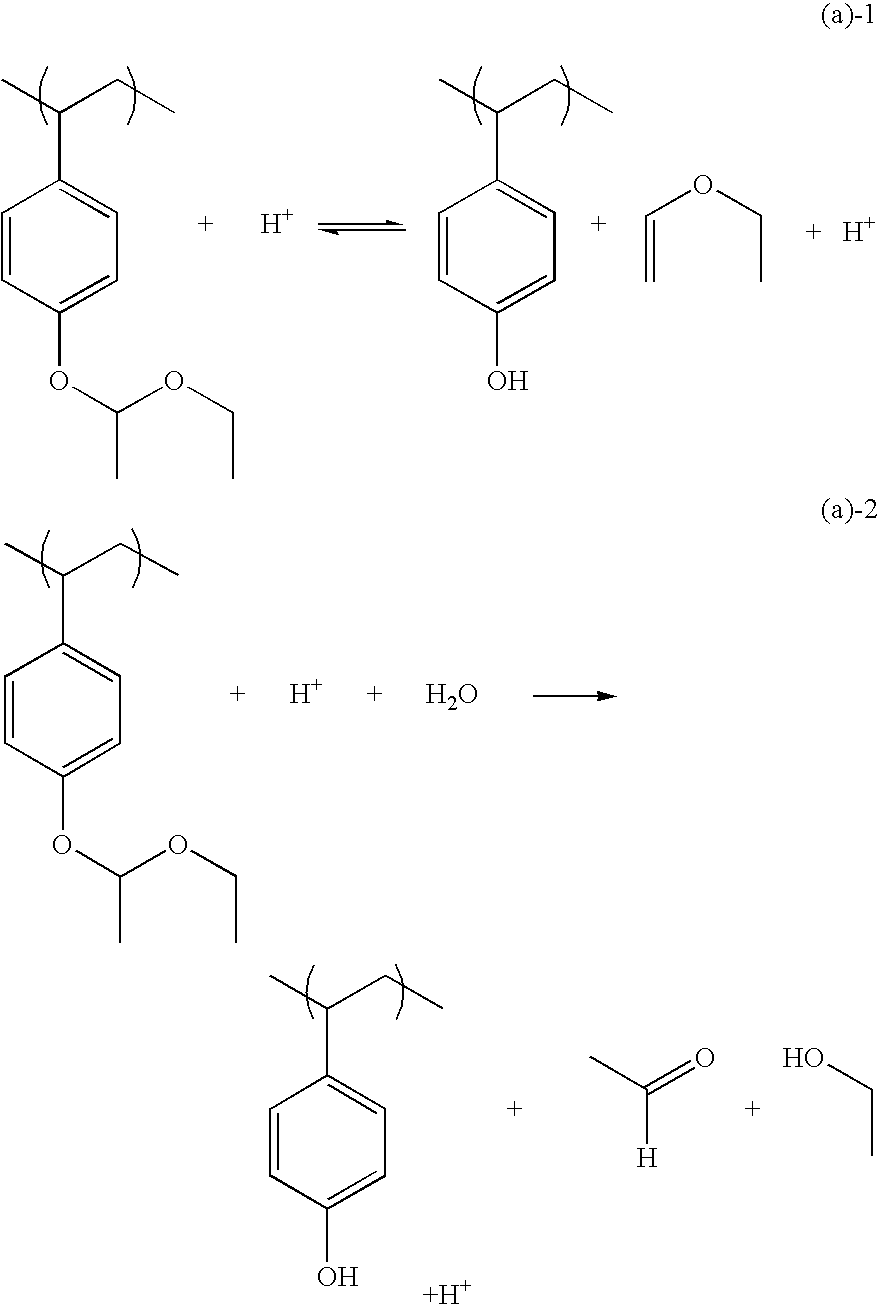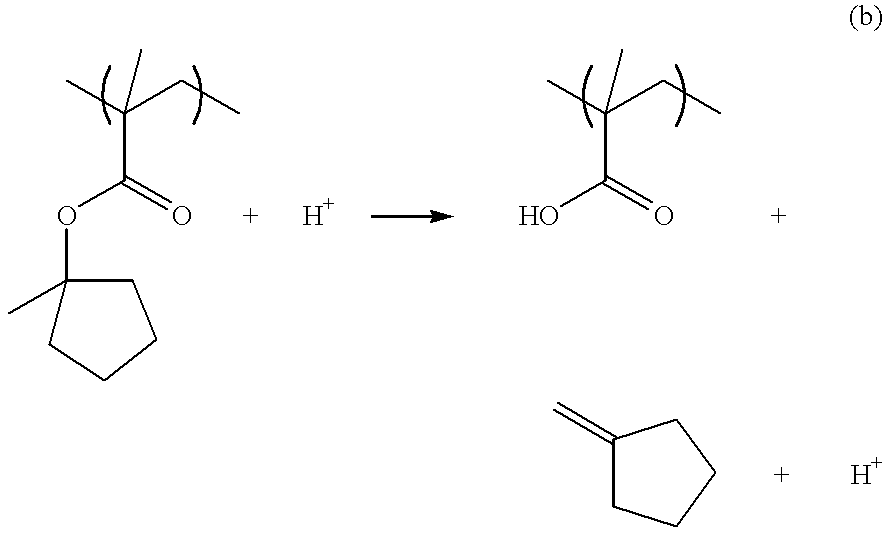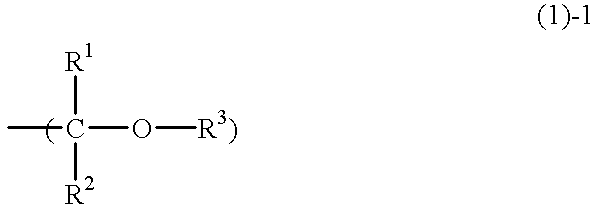Chemically amplified positive resist composition
a technology of positive resist and composition, applied in the field of chemically amplified positive resist composition, can solve the problems of serious problem in mask production technology, reduce line width, reduce sensitivity, etc., and achieve the effect of minimizing the change of sensitivity and minimizing the footing on the chromium substra
- Summary
- Abstract
- Description
- Claims
- Application Information
AI Technical Summary
Benefits of technology
Problems solved by technology
Method used
Image
Examples
example
Examples of the invention are given below by way of illustration and not by way of limitation. The abbreviations used herein are Mw for weight average molecular weight, and Mn for number average molecular weight.
(1) Preparation of Resist Solution
A series of resist solutions were prepared by thoroughly mixing a polymer (Polymers 1 to 16), a photoacid generator (PAG1 and 2), a dissolution inhibitor (DRI1), and a basic compound, all shown below, in 800 parts by weight of a solvent mixture of propylene glycol monomethyl ether acetate (PGMEA) and ethyl lactate (EL) in a weight ratio of 1:1 to which 300 ppm of fluorochemical surfactant FC-430 (Sumitomo 3M Co., Ltd.) was added, followed by filtration through a high-density polyethylene filter with a pore size of 0.1 μm.
(2) Pattern Exposure Evaluation
Using CFS-4ES (Shibaura Mfg. Co., Ltd.), a chromium film of 100 nm thick was deposited on a synthetic quartz wafer having a diameter of 6 inches, by sputtering. Using Clean Track Mark 5 (Tokyo ...
PUM
| Property | Measurement | Unit |
|---|---|---|
| Angle | aaaaa | aaaaa |
| Nanoscale particle size | aaaaa | aaaaa |
| Nanoscale particle size | aaaaa | aaaaa |
Abstract
Description
Claims
Application Information
 Login to View More
Login to View More - R&D
- Intellectual Property
- Life Sciences
- Materials
- Tech Scout
- Unparalleled Data Quality
- Higher Quality Content
- 60% Fewer Hallucinations
Browse by: Latest US Patents, China's latest patents, Technical Efficacy Thesaurus, Application Domain, Technology Topic, Popular Technical Reports.
© 2025 PatSnap. All rights reserved.Legal|Privacy policy|Modern Slavery Act Transparency Statement|Sitemap|About US| Contact US: help@patsnap.com



